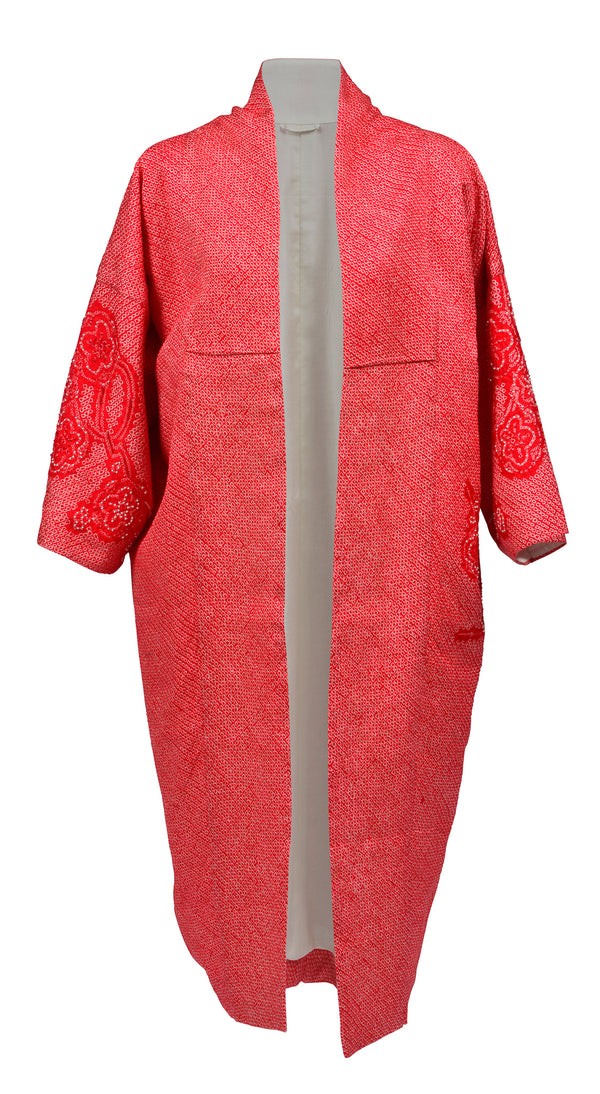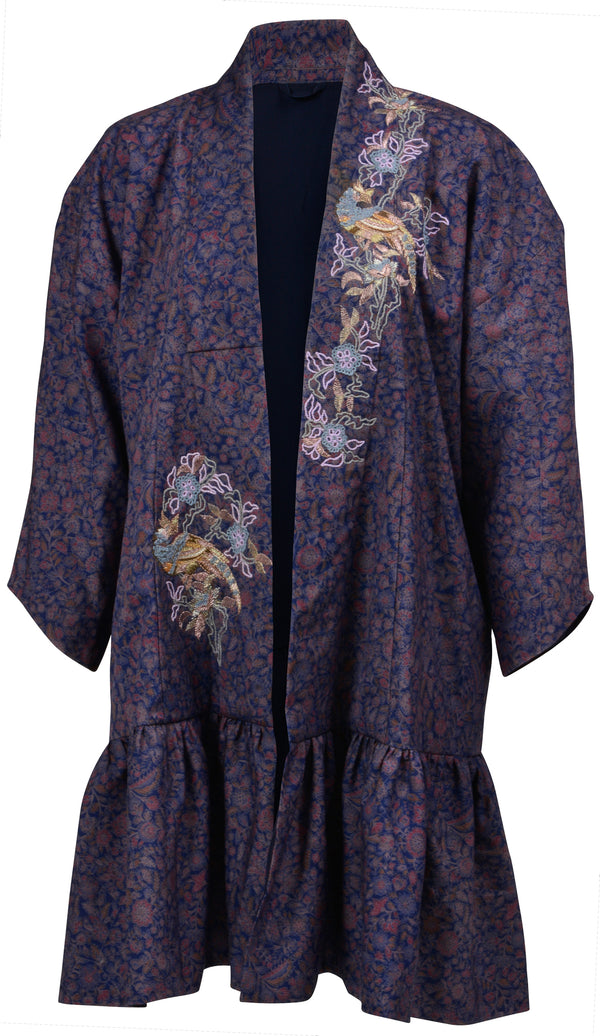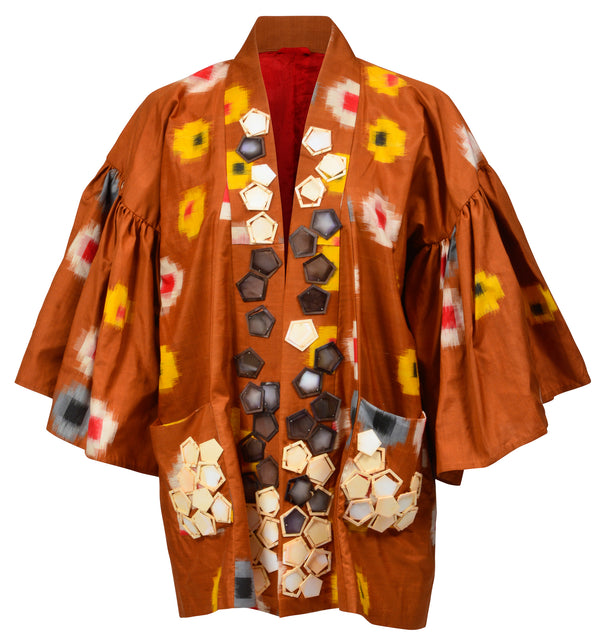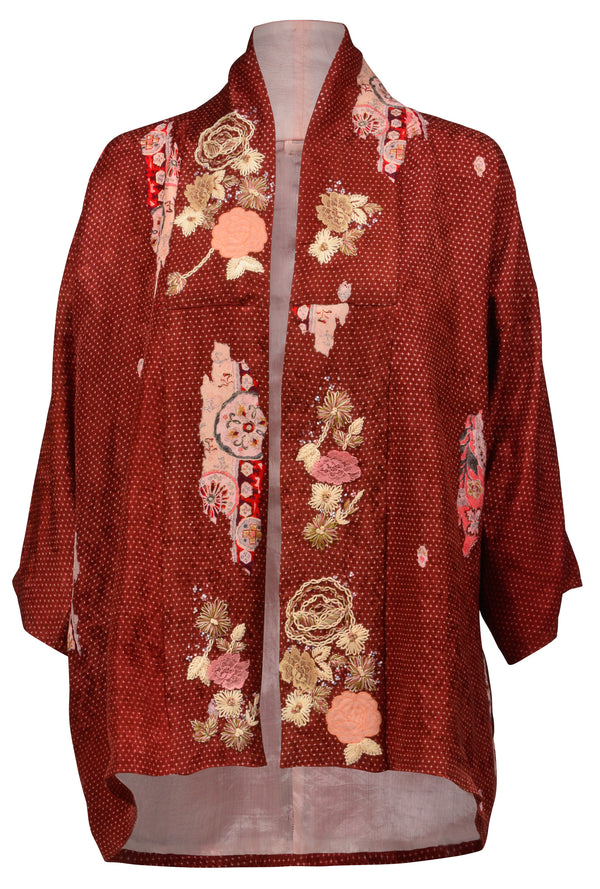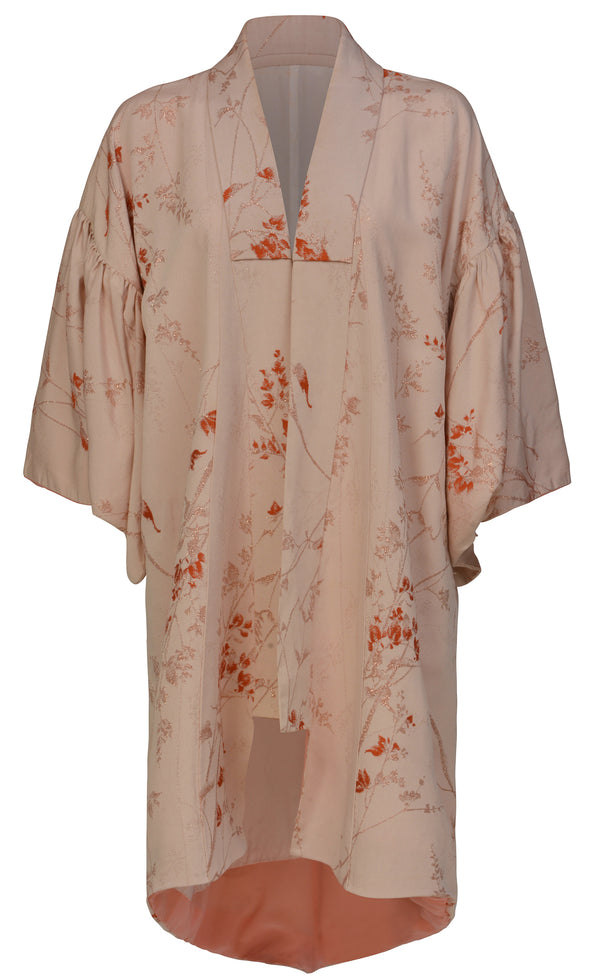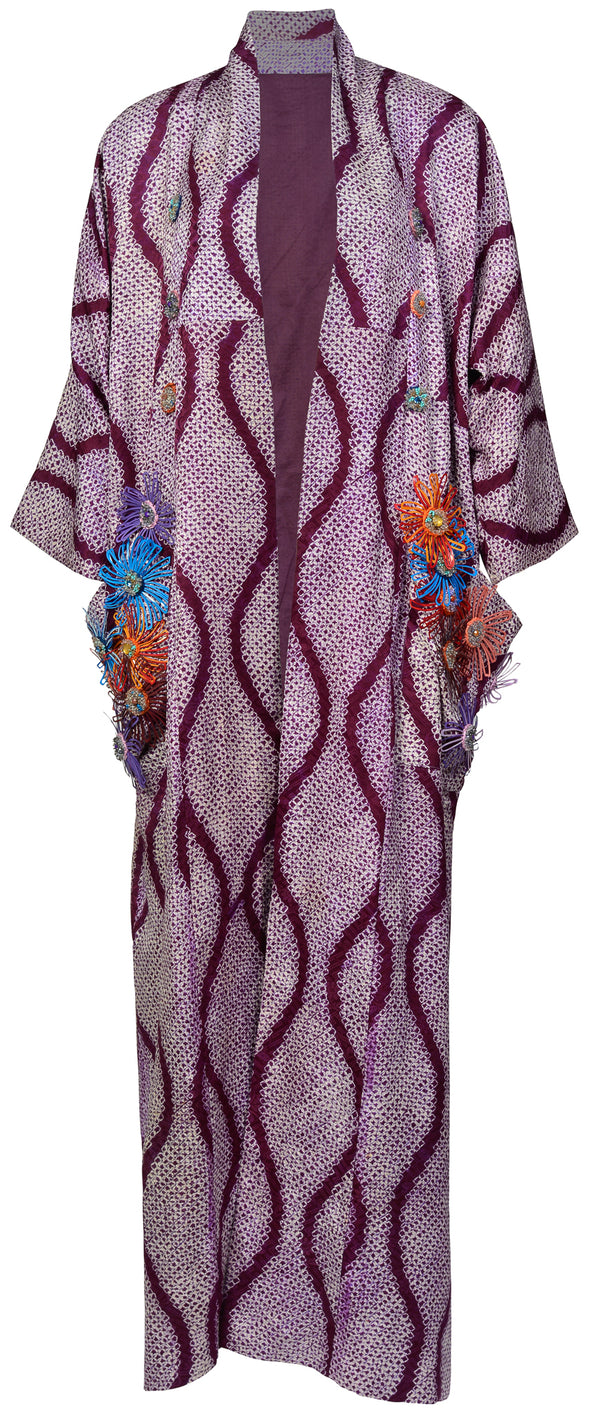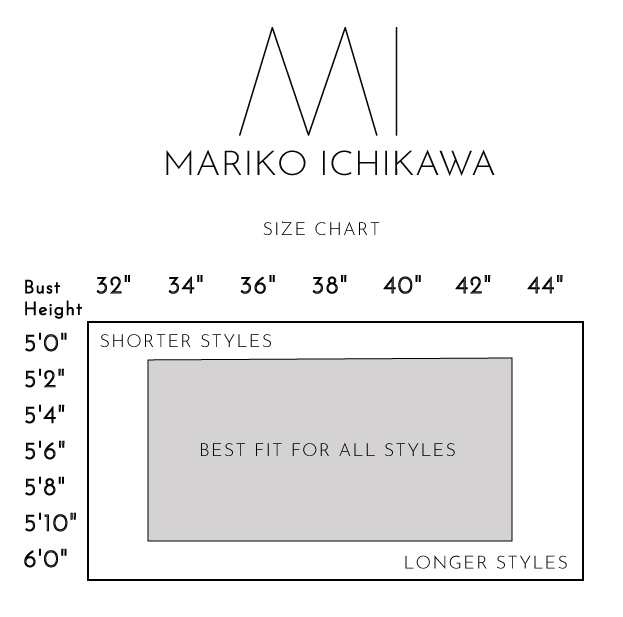Showing 67 products
SKU: 201937
AVAILABILITY: Out of Stock
VENDOR: Mariko Ichikawa
This one of a kind kimono is made from a vintage silk shibori dyed haori. A haori is a traditional Japanese hip-length jacket, worn over a kimono that historically only men wore. During the early 19th c. the geisha of...
SKU: 201936
AVAILABILITY: Out of Stock
VENDOR: Mariko Ichikawa
This one of a kind kimono is made from a vintage printed chrimen (silk crepe) komon (all-over pattern) kimono. The white, grey and pink floral pattern and coloring meant it would have been worn in the winter to spring transition....
SKU: 201933-1
AVAILABILITY: In stock (1 item)
VENDOR: Mariko Ichikawa
Inspired by the flourishes of the Art Nouveu style, this one of a kind kimono is made from a vintage wool blue komon (all-over) patterned kimono with threadwork embroidered floral and peacock motif, silk georgette lining , strong shoulder, in-seam pockets and flounce...
SKU: 201931
AVAILABILITY: Out of Stock
VENDOR: Mariko Ichikawa
This one of a kind kimono is made from a vintage light-weight meisen silk kimono. The kimono features the kasuri (ikat or pre-dyeing) pattern throughout and would have been considered a casual kimono.  I have taken inspiration from the ikat...
SKU: 201929
AVAILABILITY: Out of Stock
VENDOR: Mariko Ichikawa
Inspired by my take on the Buddhist Wheel of life, this one of a kind kimono is made from a vintage light-weight rinzu (similar to damask) silk kimono. The komon (al-over) patterned kimono features katazome and yuzen (resist dyeing techniques)....
SKU: 201924
AVAILABILITY: Out of Stock
VENDOR: Mariko Ichikawa
This one of a kind kimono is made from a silk komon (all-over) patterned brocade kimono. The all-over floral pattern and coloring meant it would have been worn in the spring. I have taken the original, long sleeves and gathered...
SKU: 201922
AVAILABILITY: In stock (1 item)
VENDOR: Mariko Ichikawa
This one of a kind kimono is made from a vintage kimono featuring the kanoko shibori method of dyeing. Kanoko shibori is what is commonly thought of in the West as tie-dye and here required the use of thread for...

